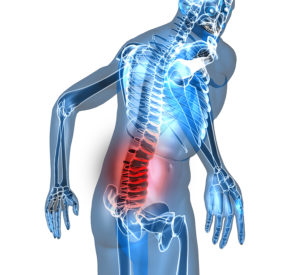 In the War on Aging, one of the big battles is fighting back pain. When is it necessary to opt for surgery? Just about everyone of our senior friends is facing either hip, knee, or back surgery these days.
In the War on Aging, one of the big battles is fighting back pain. When is it necessary to opt for surgery? Just about everyone of our senior friends is facing either hip, knee, or back surgery these days.
If Rob’s tennis buddies aren’t bragging about the number of stents in their arteries, they’re comparing the merits of their orthopedic surgeons. Often the debate is about trying stem cell injections, ozone therapies, or finally going for joint replacement or back surgery.
Back Pain Journey
In 2003 my husband Rob had been experiencing debilitating sciatic pain for 12 years and was told he needed a spinal fusion at L4-L5. After investigating, however, we found the success rate and possible side effects pessimistic.
Then one day on vacation in Bankok, he got a Thai massage from a little old lady who walked on his back. The next day he was walking upright without pain. (His medical doctors had no explanation other than “sometimes things shift.”) That lasted until this January.
I Share Your Pain
In 2004 I woke up in excruciating pain, unable to get up. Rob rushed me to the MRI in Guadalajara, and we were told that I needed surgery to relieve the pressure on nerves caused by compressed discs. I said “no, thanks,” and opted to try everything else instead.
For two years, I tried acupressure, acupuncture, massage, yoga, traction, pain medications, etc. I was still playing tennis, however, and the pain was getting worse. So was my tennis. So in 2006 I had vertebral fusion (L4-L5) with titanium pins inserted to stabilize the spinal column.
Success. But ten years later, it started hurting again, above and below L4-L5. But I can live with it, and my tennis is still improving, so I opted to get an inversion table. I try to hang upside down for 10 minutes everyday. And mild pain meds help.
Me Too at the Krakoff House
Then, in the beginning of 2018, Rob started having debilitating pain in the sciatic nerve down the right leg. He tried everything, pain meds, physical therapy, injections, massage. Nothing helped. After six months, he opted to have microsurgery for spinal stenosis by Mexico’s leading spinal column surgeon Dr. Cruz Lopez.
The 6-hour operation was a success. However, the pain only got a little better. Then suddenly, four months later, he woke up with excruciating pain down the other leg. He couldn’t walk without crutches, couldn’t sleep, and none of the pain medications did much.
Two weeks ago, another five-hour surgery relieved pressure on the sciatic nerve caused by a herniated disc and more compression. We are optimistic that this time he will eventually be pain free. Right now, he’s walking cautiously and feels as if the pain is post-surgical.
Healthy Seniors Are Informed
The articles on back pain, the books, the medical sites are all full of good advice on what to do for back pain. Some claim that chiropractic work helps, yoga, stretching, Rolfing, and all sorts of alternative therapies. Most doctors will tell you to first treat with heat and ice, aspirin and other over-the-counter analgesics.
Some back pain comes from injuries, sprains and strains that heal with time. Some herniated disk pain goes away on it’s own. From what I’ve been reading, if your pain doesn’t heal within 3-6 months, you’ve got more than a strain. You’ll need to get imaging done, and a diagnosis from an orthopedic doctor. Surgery isn’t the first option but the last.
Imaging will help you get a diagnosis and treatment plan. Orthopedic surgeons have more tools available now such as microsurgery to correct stenosis and compressed discs. As healthy seniors, we can learn about risks and options rather than rush into surgery where there’s no going back.
We need to get familiar with health sites on the web, like the National Institutes of Health, WebMD, Mayo Clinic, and MedlinePlus, etc. They can help us make informed decisions. As always, ask about your doctor’s experience, and get a second opinion.

Recent Comments